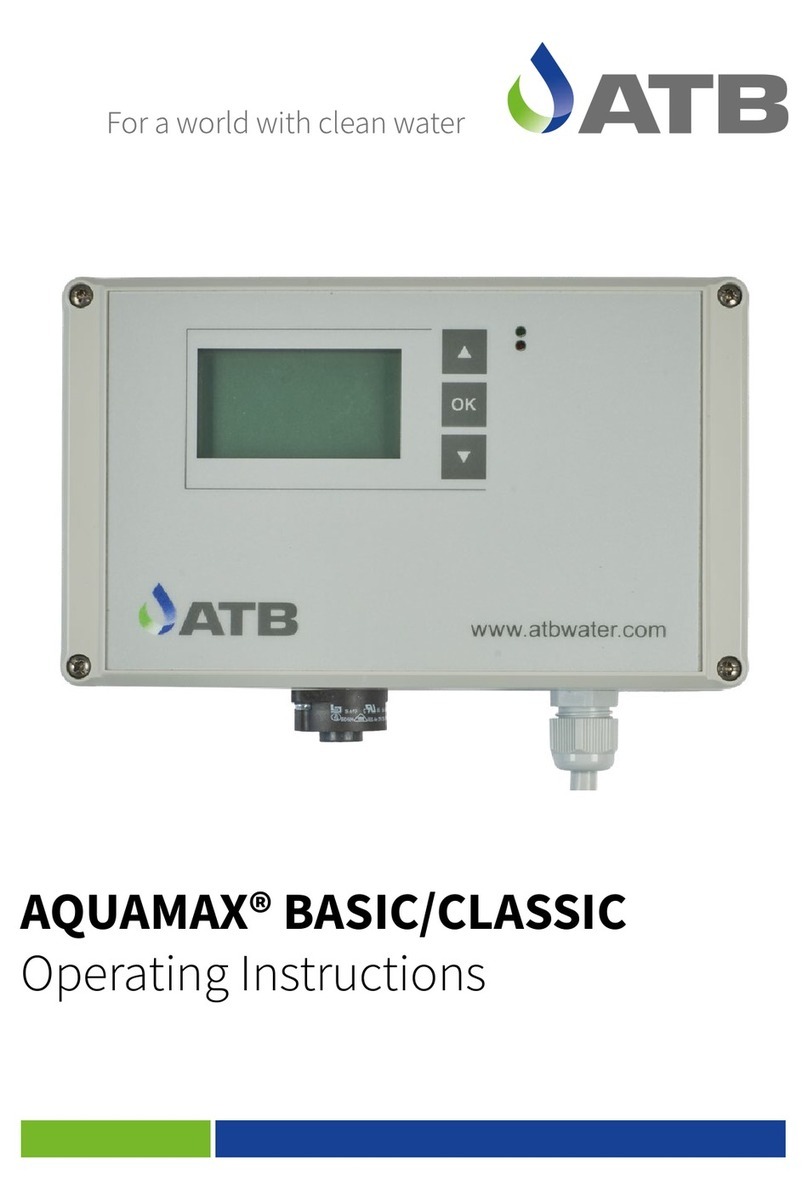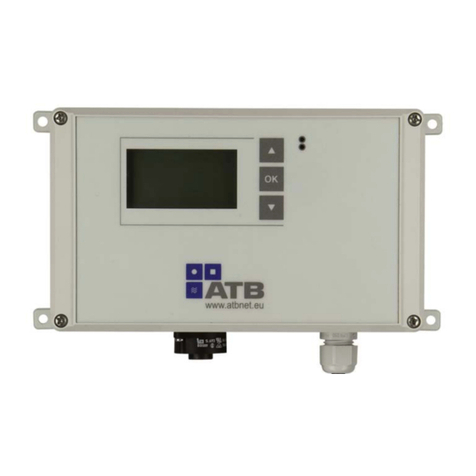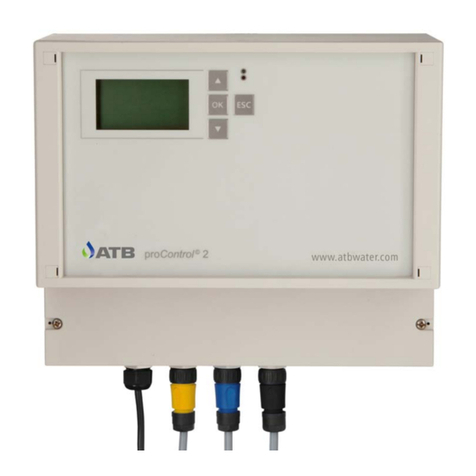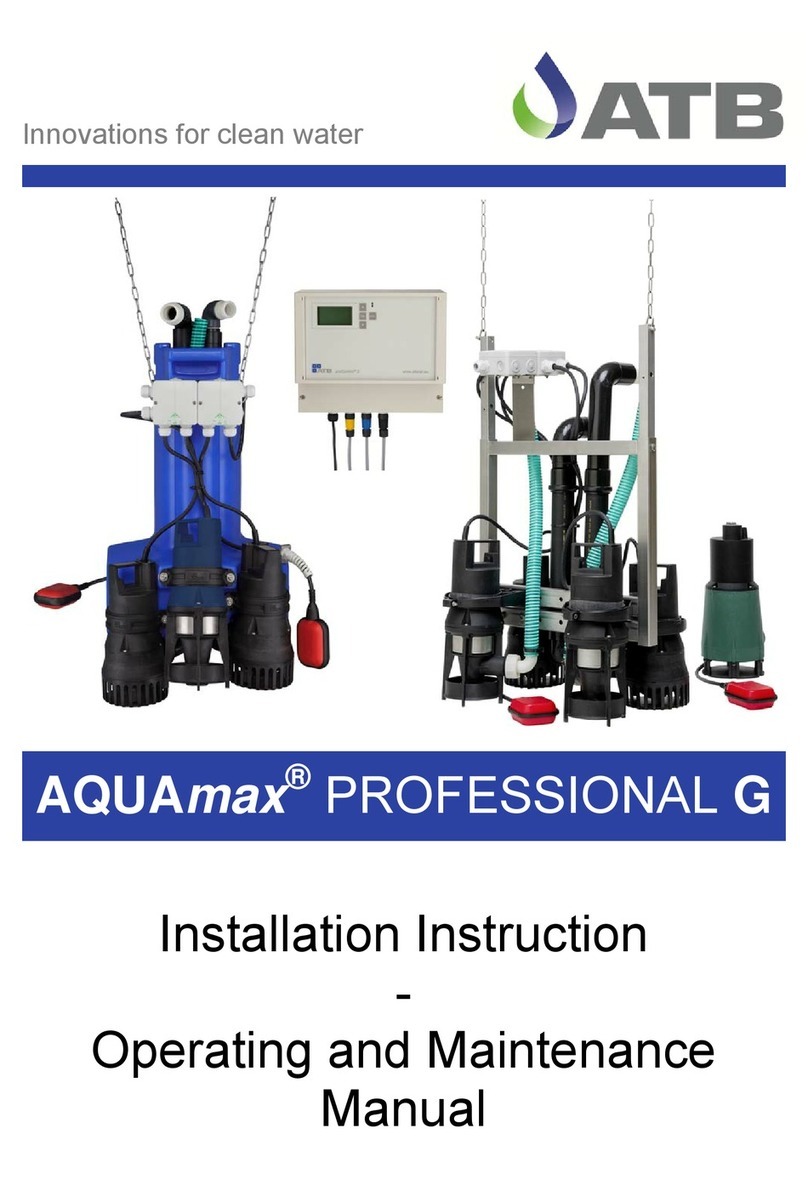
Installation/Operating Instructions ATB - HSA
ATB WATER GmbH, Südstraße 2, 32457 Porta Westfalica, Germany, www.atbwater.com /
Version: 07.11.2022 / Page 4 of 41
1. Safety regulations
We will mention, in this chapter, the major kind of risks and dangers that might
occur, and the safety precautions to be taken.
•As mentioned in our declaration of conformity and in the warranty regulation, our aerator
can only be used when the installation, into which they need to be incorporated, is declared
conform to the Machinery Directive.
•If ATB did not deliver an explosion proof motor, it is forbidden to use the equipment in areas
where explosive gases might be present.
•At the moment of receipt and acceptance of the goods, you must always check that the
HELICAL IMPELLER can be rotated manually. Always be careful not to put a hand
between the HELICAL IMPELLER and the volute.
•Because of the weight of the goods, persons who are not directly involved should be kept
out of the handling area.
•Prior to the installation the lifting equipment must be inspected by an official authority, and
found suitable for the job, to allow safe loading, unloading and positioning.
•The complete electrical installation has to be designed in accordance with the European
standard EN 60204 concerning the electrical equipment of machinery, to NEMA, IEC or any
other locally valid directives concerning the electrical installation and connection of
machinery.
•Starting the aerator on dry land, to check the balance of the motor and HELICAL
IMPELLER or to do a last greasing, should not be done without taking radical safety
provisions and has to be performed by a qualified person. Should any abnormality occur,
the aerator must be switched off immediately.
•During the installation of the aerator, all necessary personal protection equipment has to be
at the disposal of all persons involved in the assembly and installation of the equipment.
It is essential to check that the safety switch of the unit that needs to be installed,
and also of all other units located in the basin where the unit needs to be installed,
has been switched off and locked in this position during all work on the electrical
installation, during maintenance or repairs, and during installation.
As a safety precaution and also to prevent the unit from tipping, it is absolutely
forbidden to stand on the unit. It is possible to reach the aerator by using a boat as
shown on drawing 1: “Reaching the unit by using a boat.”.
•During any intervention on the electrical installation, maintenance and/or repairs of the unit,
a second person has to be present to verify the safe intervention and eventually assist.
ATB WATER GmbH is not responsible for any kind of incidents.


































